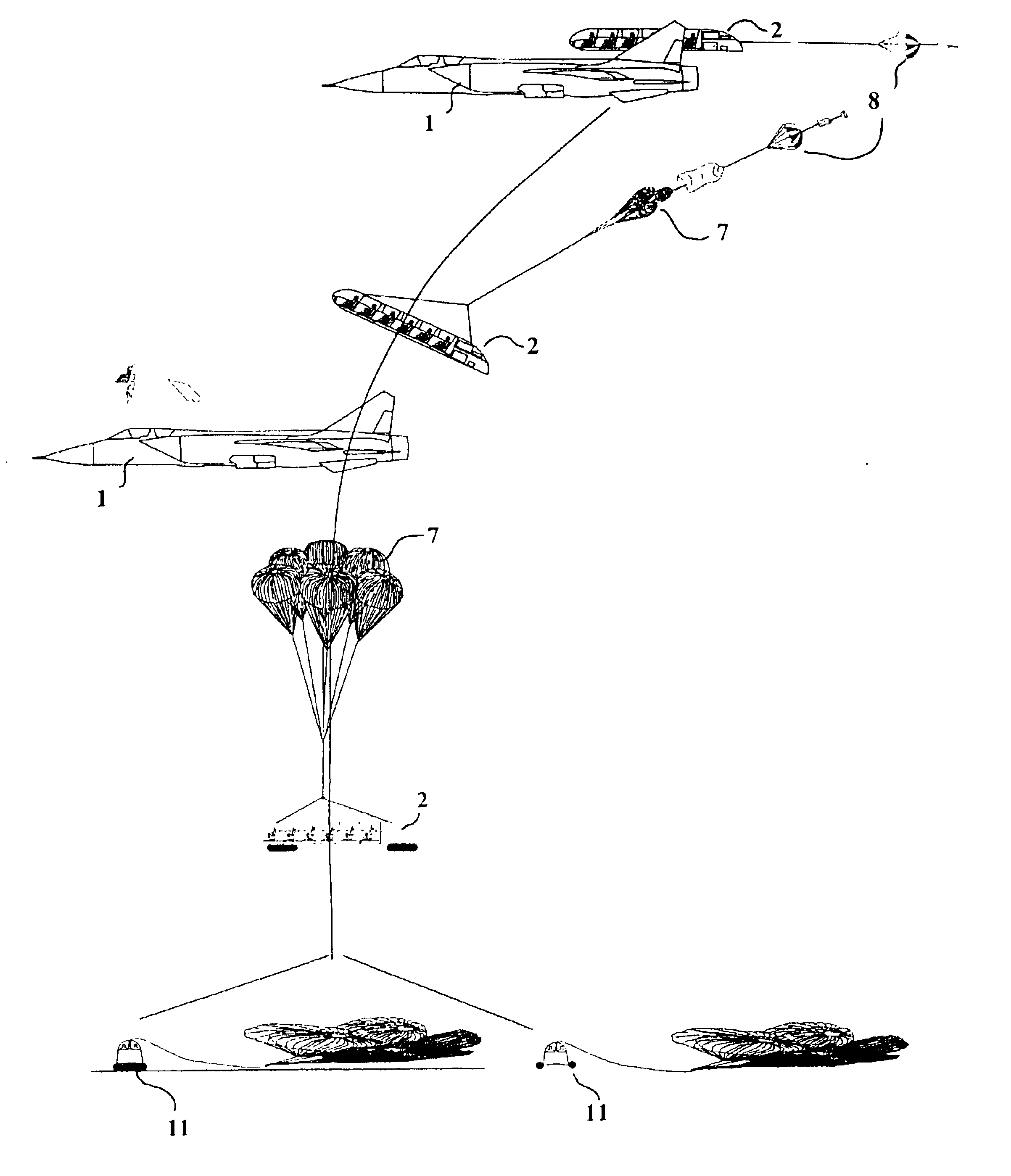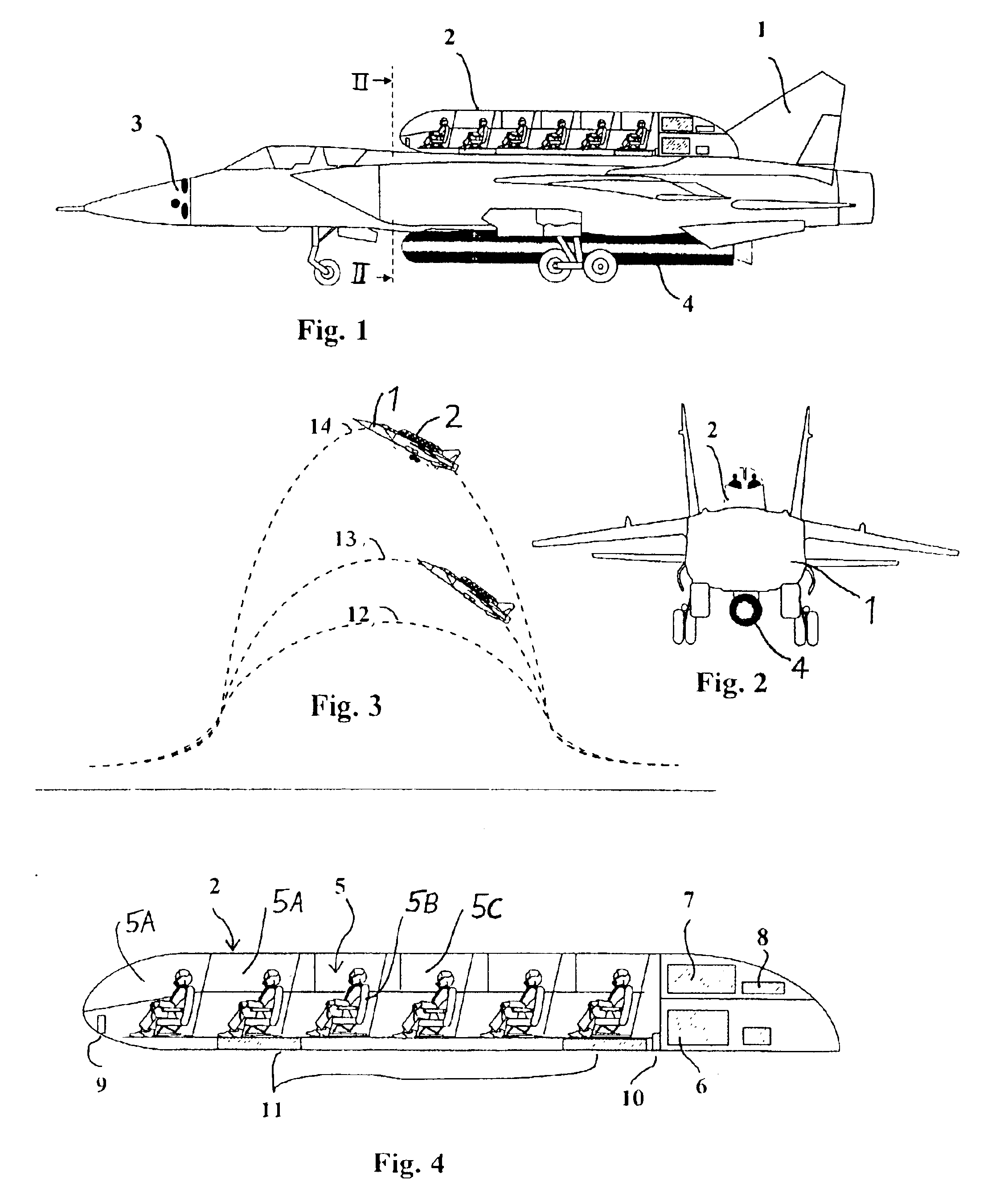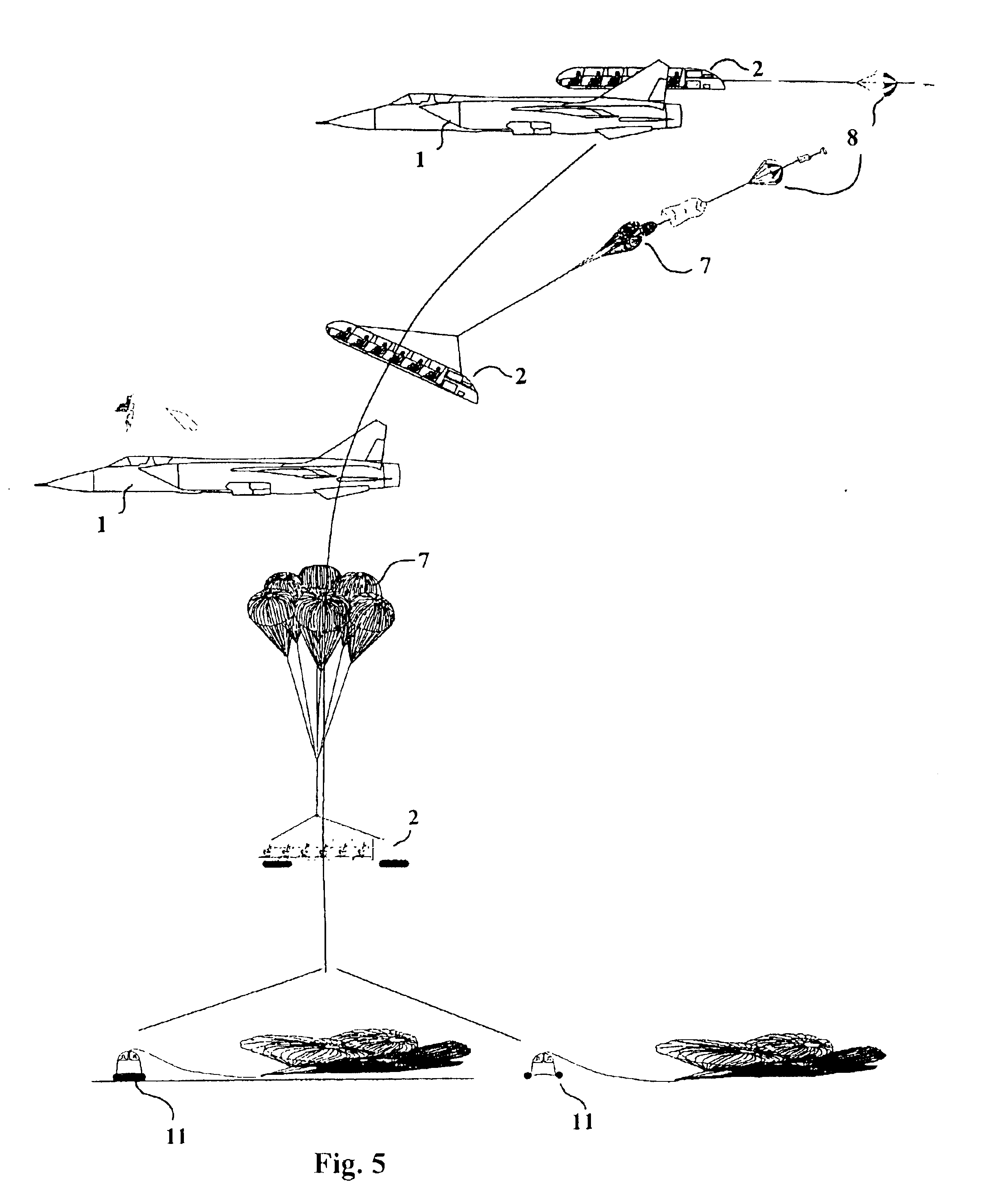Passenger transport module system for supersonic aircraft
a supersonic aircraft and passenger technology, applied in the direction of aircraft ejection means, aircraft crew accommodation, emergency equipment, etc., can solve the problems of limited seating comfort, high per-passenger cost of such a flight, and many civil commercial applications of existing supersonic military aircra
- Summary
- Abstract
- Description
- Claims
- Application Information
AI Technical Summary
Benefits of technology
Problems solved by technology
Method used
Image
Examples
Embodiment Construction
FIG. 1 schematically represents the overall system according to the invention, including a supersonic aircraft 1 of military fighter jet type, e.g. a decommissioned military fighter aircraft, and a passenger module 2 mounted on the top of the fuselage of the aircraft 1. Multi-axis attitude control thrusters 3 are provided at the front or on the nose of the aircraft 1. A liquid or solid fueled rocket booster 4 is mounted on the belly of the aircraft 1. The thrusters 3 and booster 4 are connected to suitable control devices for control from the cockpit of the aircraft 1, in any conventionally known manner.
As seen especially in the enlarged detail view of FIG. 4, the passenger module 2 includes a passenger cabin 5 preferably comprising a plurality of passenger compartments 5A, which may be enclosed and separated from one another, for example by partitions therebetween. Each passenger compartment 5A includes at least one passenger seat 5B and a large window 5C, for example in the manner...
PUM
 Login to View More
Login to View More Abstract
Description
Claims
Application Information
 Login to View More
Login to View More - R&D
- Intellectual Property
- Life Sciences
- Materials
- Tech Scout
- Unparalleled Data Quality
- Higher Quality Content
- 60% Fewer Hallucinations
Browse by: Latest US Patents, China's latest patents, Technical Efficacy Thesaurus, Application Domain, Technology Topic, Popular Technical Reports.
© 2025 PatSnap. All rights reserved.Legal|Privacy policy|Modern Slavery Act Transparency Statement|Sitemap|About US| Contact US: help@patsnap.com



